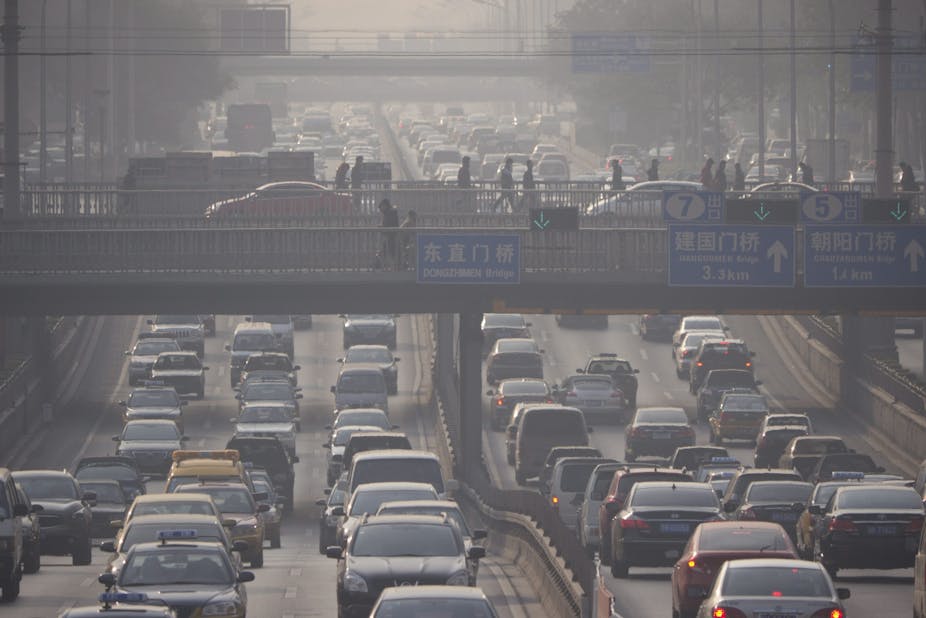Last month Chinese leader Xi Jinping set out his top reform agendas for China’s next decade, setting out important policies, ranging from political reforms, social policy and market reform, to a commitment to encourage innovation.
One important change is China’s intention to move away from a GDP-oriented, at-the-cost-of-everything development model, in favour of a move towards pollution control, energy efficiency and debt reduction.
In the midst of rapid industrialisation and urbanisation, China needs a strong political will and commitment to move away from its current growth model to a green/low carbon development model.
Given the scale of the environmental challenge and the complexity of China’s decentralised governance system, China needs to find a new path for growth, navigating between the Western lifestyle of over-consumption, and China’s “business as usual” model (high-resource utilisation, high emission and low energy efficiency).
As with every developing country, there will be resistance to a transition that will potentially slow the Chinese GDP growth rate, and as such, if China can implement a more green-focused model, it could make a significant contribution to the world community.
The achievement of a green/low-carbon China (or the Chinese term of “Ecological Civilisation”) is a part of Xi’s “Chinese dream” and will benefit both China and the rest of the world by contributing significantly towards global emissions reduction. The immediate benefit to China will be an overall increase in the quality of life for Chinese citizens: being able to see blue skies more often, breathe and drink cleaner air and water, as well as create greater demand for research and technologies from developed countries. If implemented, its focus on local officials’ performance will also change the mentality of Chinese leaders.
Furthermore, “Made-in-China” products would be produced with lower emissions and under more standardised working conditions and fairer income levels.
For Australia economically, this is a double-edged sword: China’s demands for Australia’s natural resources (such as coal and minerals) will inevitably diminish, but at the same time, Australia has the chance to invest in China’s green development, and maintain strong trade relations despite the decrease in demand for our natural resources.
As China is linked closely to us, rapid urbanisation in China means an increase in demand which could also benefit Australia’s economy. We should take advantage of the potential gains flowing from the reforms to Australia’s resource, retail, education and business sectors.
How is change to be implemented? By two interrelated processes: the first involving centralisation of political power, to provide leadership in strategic issues and continuation of market reform; and the second by reducing rich-poor gaps and creating a fair society.
The first process embodies the “top-down reform design” approach, where strategic agendas will be initiated, carried out and managed by the central government.
Xi does not believe the market can effectively implement change and accordingly, China’s next stage reform requires a top-down push. As part of this process, China will establish two new powerful government bodies: the Central Leading Team for Comprehensively Deepening Reforms, and the State Security Committee.
Interestingly, this top-down approach is not intended to inhibit the decentralisation or development of China’s private economy. Xi will abolish the government’s control over the price of utilities, and will also allow private capital to invest in state-owned firms and government projects, giving the market a more decisive role to play.
Reducing the rich-poor gap
The second process is designed to address polarisation and unfairness issues and to promote good governance. China’s rich-poor gap has reached an alarming level and social unrest threatens the Party’s power. Unfortunately, China has not provided specific policies to reduce the rich-poor gap, but the reform agenda includes a few issues which are of general concern:
Giving the rural population more rights to move to small-medium cities and access the same entitlements as urban citizens.
Giving farmers better land rights. Currently land acquisition in China’s suburban areas has generated conflict due to local governments and developers combining in their efforts to reduce farmers’ land compensation benefits.
Education reform: primary and secondary school students will not be segregated as accelerated or normal, no preferential treatment will be given to certain public schools and headmasters and teachers will be rotated among public schools.
Abolishing the controversial re-education labour camps.
Various measures to enhance good government including strengthening anti-corruption measures and reducing the local government’s power over the court system.
These agendas are ambitious, however the key lies in their implementation. The worst scenario is that power is centralised, but Xi fails to implement the reforms outlined above. If this occurs, he risks leaving China polarised and increasing the domination of the central government, at the cost of the environment and health of its citizens.

